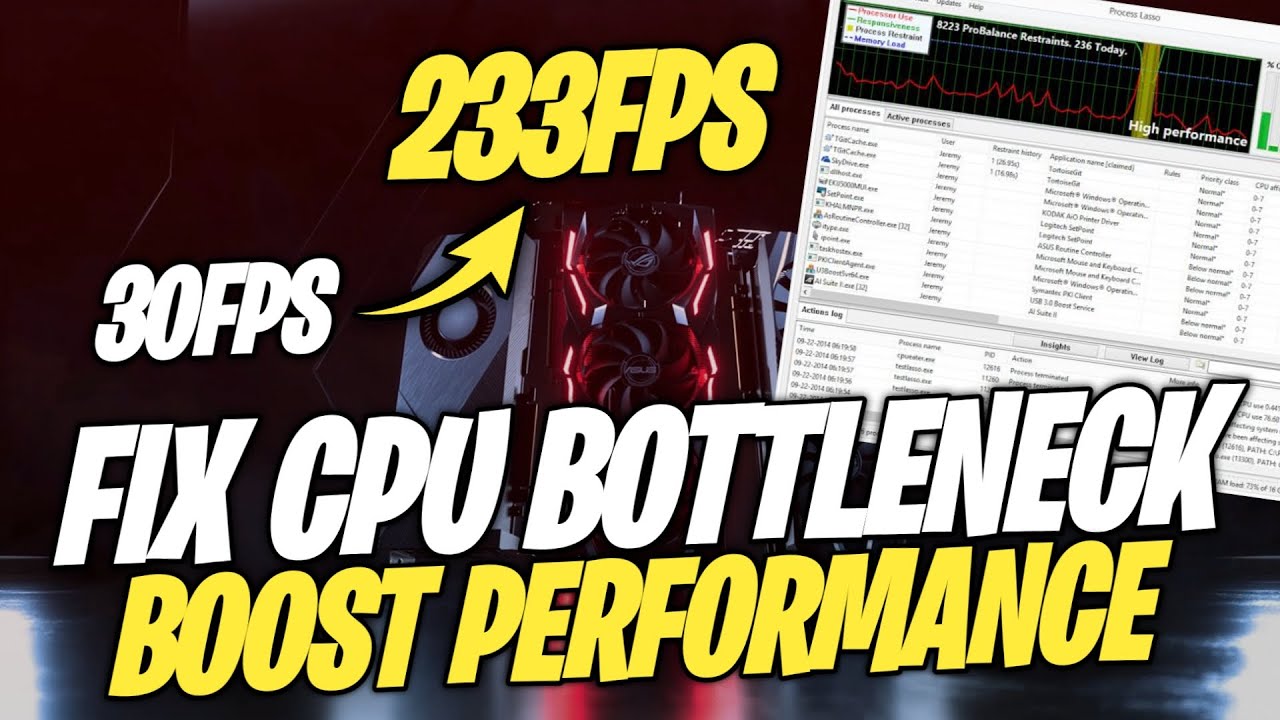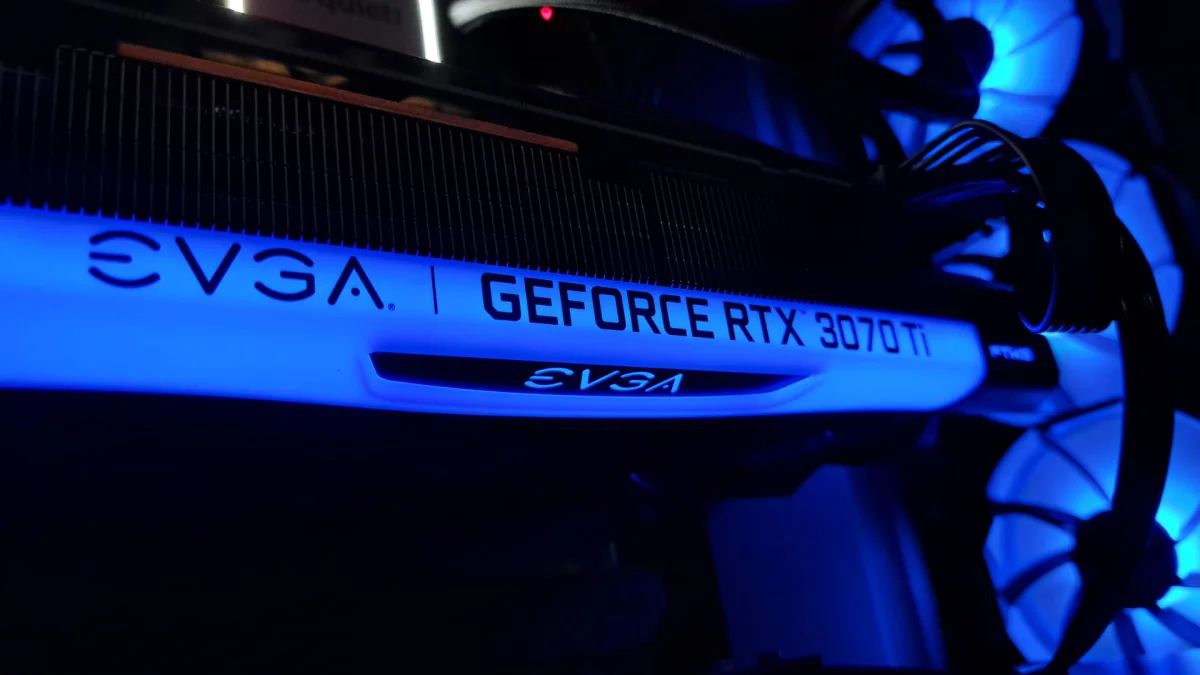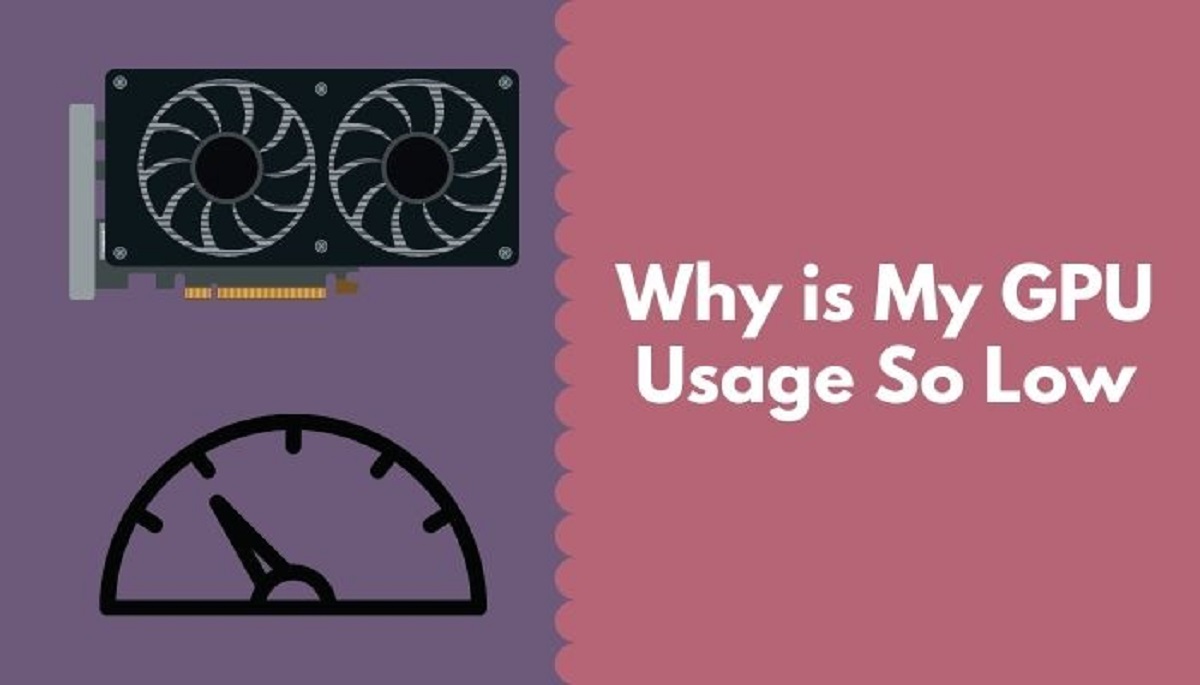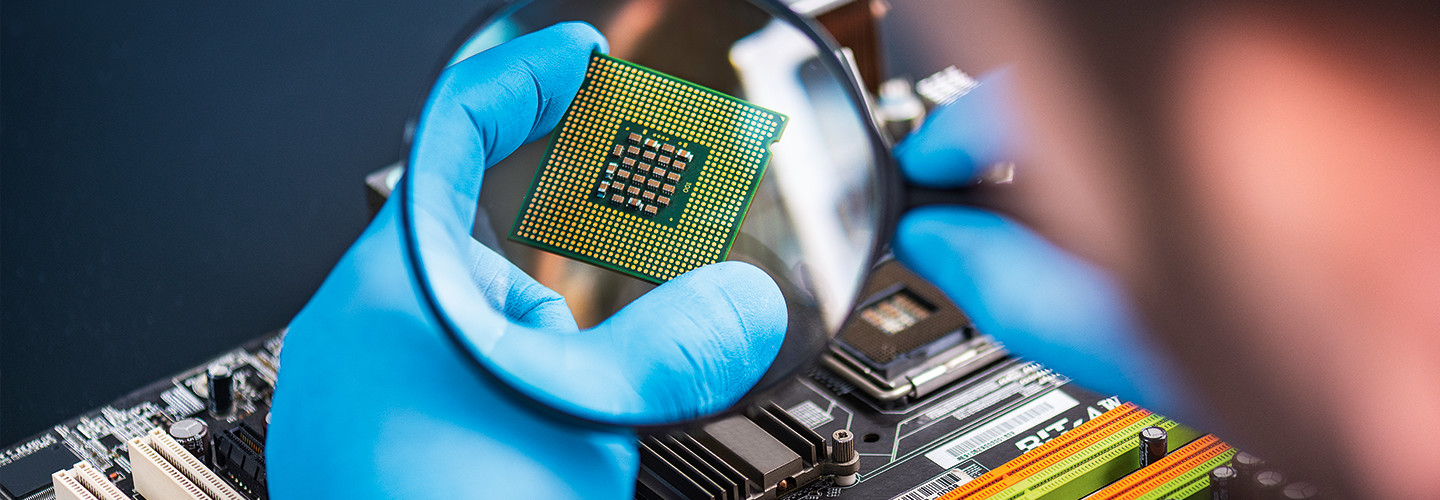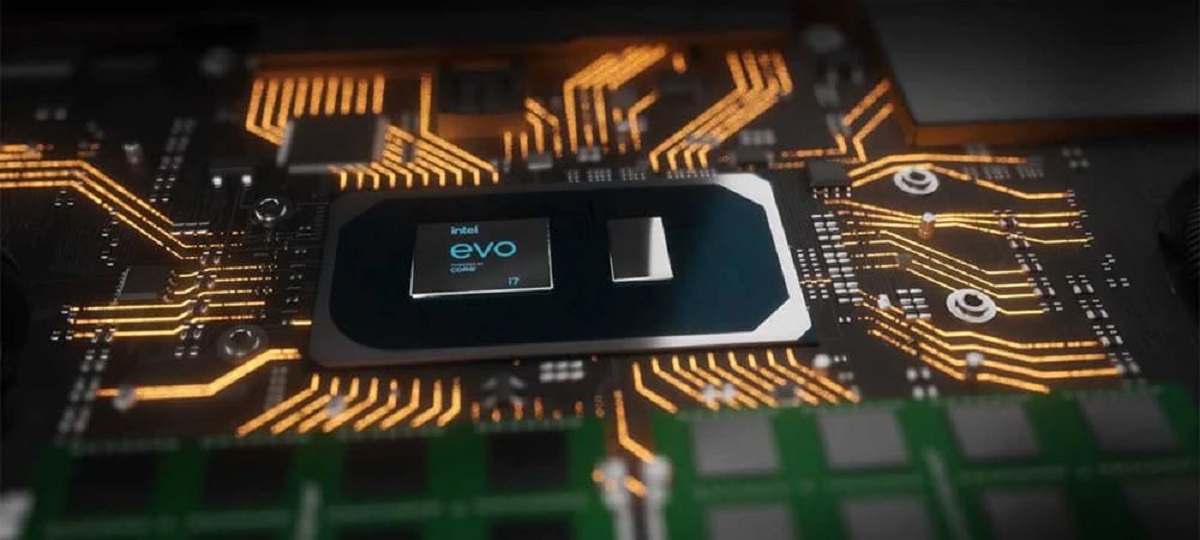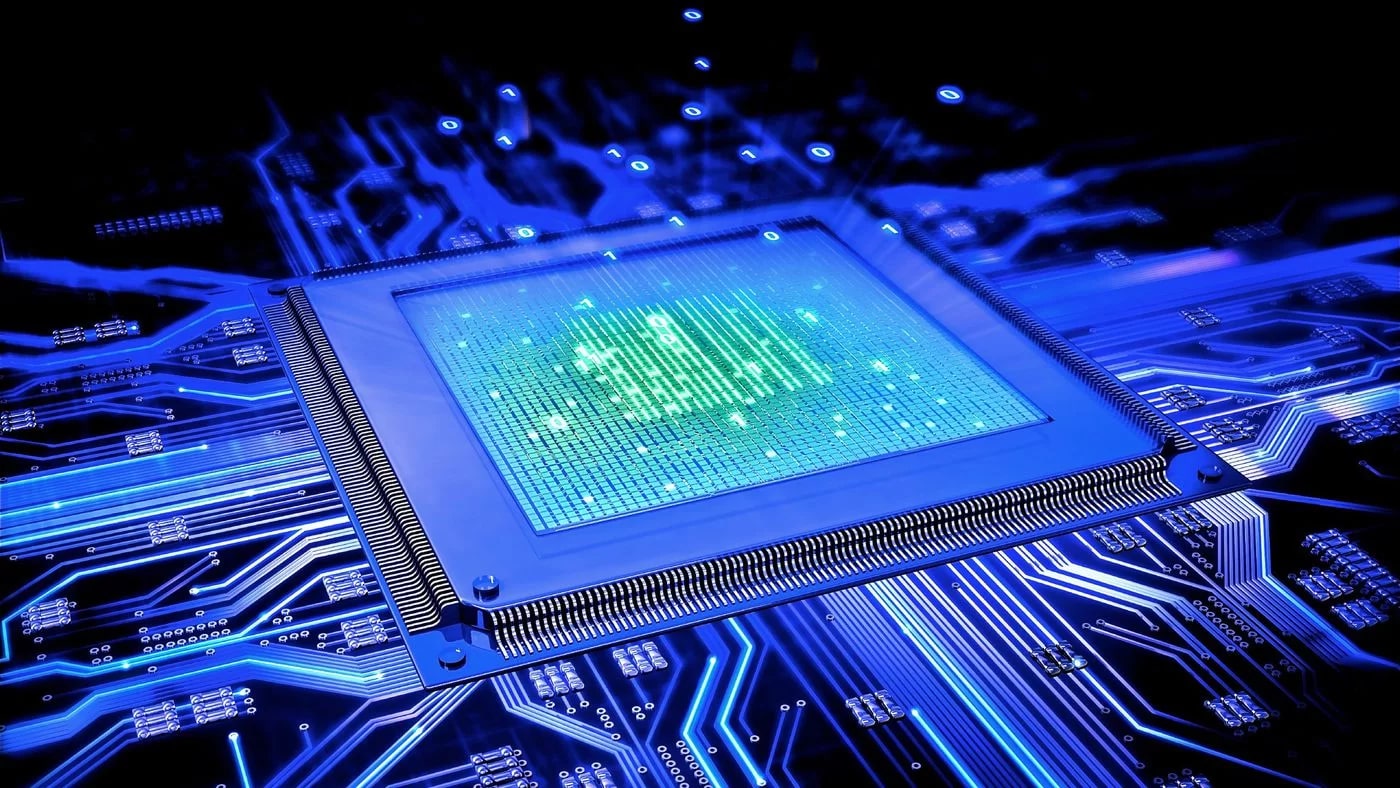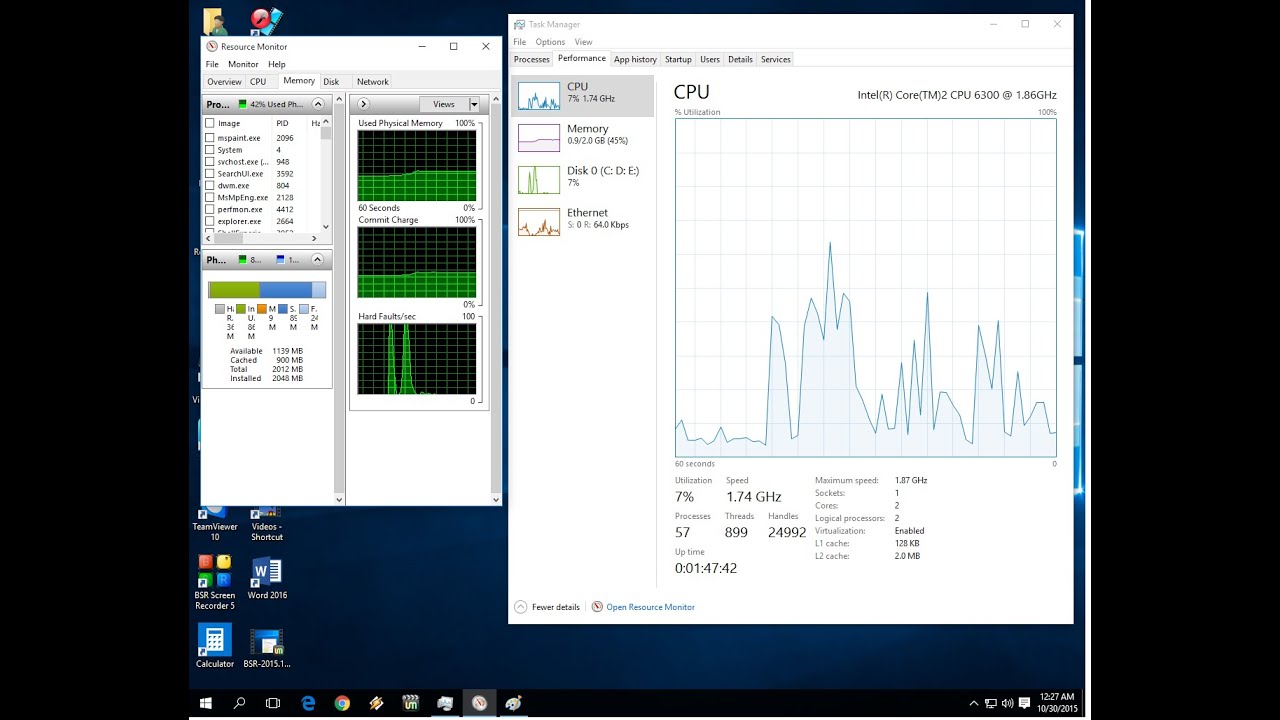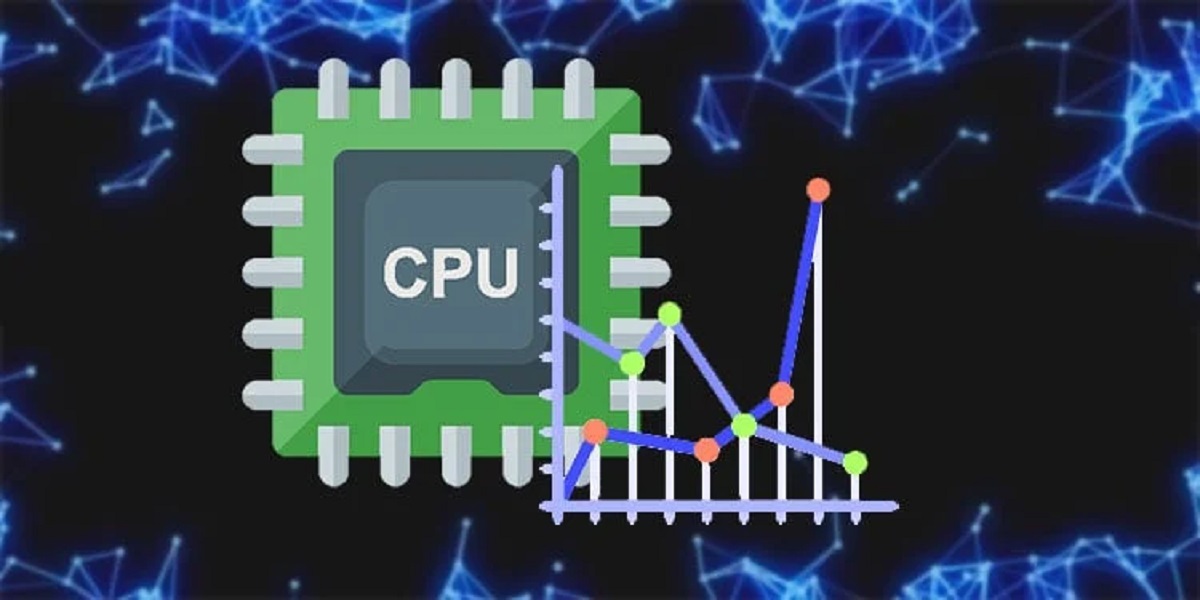Common Causes of CPU Bottleneck
A CPU bottleneck occurs when the central processing unit (CPU) is unable to keep up with the demands of the system, resulting in decreased performance and slower processing speeds. Understanding the common causes of CPU bottleneck can help you identify and address any potential issues. Here are some of the main factors that can contribute to CPU bottleneck:
- Outdated CPU: If you are using an older CPU model, it may not have the processing power to handle the demands of modern applications and software. Newer CPUs are often faster and more efficient, allowing for smoother multitasking and improved overall performance.
- Inadequate Cooling: Overheating can significantly impact CPU performance. If the cooling system in your computer is insufficient or poorly maintained, the CPU may throttle its performance to prevent damage. Ensuring proper airflow and investing in quality cooling solutions can help prevent this bottleneck.
- Insufficient RAM: Random Access Memory (RAM) plays a crucial role in supporting the CPU’s operations. Insufficient RAM can lead to excessive swapping between the RAM and the hard drive, causing the CPU to wait for data, resulting in a bottleneck. Upgrading your RAM can help alleviate this issue.
- Background Processes: Running multiple resource-intensive programs or background processes simultaneously can strain the CPU’s capabilities. These processes may include antivirus scans, system updates, or other software that consumes significant CPU resources. Closing unnecessary programs and optimizing system settings can help free up CPU resources.
- Hardware Incompatibility: Certain hardware components, such as graphics cards or storage devices, may not be compatible with your CPU or motherboard. Incompatibility issues can lead to a CPU bottleneck as the system struggles to communicate and transfer data efficiently. Ensuring compatibility when upgrading or adding hardware components is essential.
By understanding these common causes of CPU bottleneck, you can take the necessary steps to address the issue and optimize your system’s performance. Pinpointing the specific cause of the bottleneck may require monitoring CPU usage, analyzing system resources, and conducting benchmark tests. Once identified, you can implement appropriate solutions to reduce or eliminate CPU bottlenecks and enhance your overall computing experience.
How to Identify CPU Bottleneck
Identifying a CPU bottleneck is crucial for optimizing your system’s performance. Here are several methods you can use to determine if your CPU is experiencing a bottleneck:
- Monitoring CPU Usage: Utilize task manager or a system monitoring tool to observe the CPU usage. If the CPU consistently operates at or near 100%, it is a strong indicator of a bottleneck.
- Examining CPU Temperatures: High CPU temperatures may suggest inadequate cooling, which can lead to performance throttling. Use monitoring software to check the temperature of your CPU during heavy workloads or gaming sessions.
- Performing Benchmark Tests: Run benchmark tests such as Geekbench or Cinebench to evaluate your CPU’s performance against standard measurements. If your CPU’s scores fall significantly below expectations, a bottleneck might be present.
- Identifying High Interrupt Service Time (IST): Interrupt Service Time refers to the CPU’s time spent handling hardware device interrupts. High IST can indicate a driver or hardware issue that is causing excessive CPU usage.
- Examining Application Performance: If you notice that certain applications consistently run slowly or take longer to load, it could be an indication of a CPU bottleneck. Monitoring the CPU usage of these specific applications can provide further insights.
It is important to note that CPU bottlenecks are often accompanied by other symptoms, such as system freezes, stuttering in games, or slow overall performance. Monitoring these symptoms alongside the methods mentioned above will help you accurately identify a CPU bottleneck.
Once you have confirmed the presence of a CPU bottleneck, you can proceed to the next section to learn various techniques for reducing bottlenecks and optimizing CPU performance.
Tips for Reducing CPU Bottleneck
If you have identified a CPU bottleneck in your system, there are several steps you can take to reduce the bottleneck and improve overall performance. Here are some tips to help alleviate CPU bottlenecks:
- Close Unnecessary Programs: Make sure to close any unnecessary programs, particularly those running in the background, that may be consuming CPU resources.
- Optimize Startup Processes: Disable or remove unnecessary programs from your startup list to reduce the CPU load during system boot-up.
- Update Drivers: Outdated or faulty drivers can cause CPU bottlenecks. Update your device drivers regularly to ensure compatibility and optimal performance.
- Reduce Graphics Settings: Lowering graphics settings in resource-intensive applications and games can reduce the strain on the CPU, allowing it to process other tasks more efficiently.
- Optimize Power Settings: Adjusting power settings to prioritize performance over energy savings can enable the CPU to operate at its full potential.
- Disable Unnecessary Background Processes: Identify and disable any unnecessary background processes or services that may be consuming CPU resources needlessly.
- Clear Out Disk Space: Having limited disk space can impact CPU performance. Regularly clean up your storage and remove unnecessary files to free up resources.
- Upgrade Your Cooling System: A proper cooling system can prevent overheating, allowing the CPU to operate at optimum levels without throttling its performance.
- Consider Overclocking: Overclocking involves increasing the clock speed of your CPU, but it can be risky. Research and follow proper overclocking techniques or seek professional assistance.
- Upgrade Your CPU: If all else fails, upgrading to a more advanced and powerful CPU can provide a significant boost in performance and eliminate the bottleneck.
Remember to approach each tip with caution and consider the specific requirements and limitations of your system. Implementing these tips can help alleviate CPU bottlenecks and enhance your overall computing experience.
Optimizing CPU Performance
Optimizing CPU performance involves maximizing the capabilities of your CPU to ensure efficient processing and improved overall system performance. Here are some strategies to optimize CPU performance:
- Update Your Operating System: Keeping your operating system up to date ensures that you have the latest optimizations and improvements for CPU performance.
- Manage Background Processes: Limit the number of unnecessary background processes and applications running simultaneously to free up CPU resources.
- Disable Unnecessary Startup Programs: Take control of your startup programs and disable any applications that are not essential, reducing the CPU load during system boot-up.
- Monitor CPU Temperature: Overheating can lead to CPU throttling and reduced performance. Use monitoring software to keep an eye on your CPU temperature and ensure it stays within optimal ranges.
- Update BIOS: Keeping your computer’s BIOS up to date can provide performance enhancements and bug fixes that can improve CPU operation.
- Utilize Power Saving Options: Adjust your power settings to use power-saving features when your system is idle, which can help conserve CPU resources.
- Disable CPU Energy Saving Features: In some cases, disabling CPU energy-saving options like Intel SpeedStep or AMD Cool’n’Quiet can improve performance by allowing the CPU to run at a constant, higher clock speed.
- Manage Virtual Memory: Adjust the virtual memory settings to ensure adequate space for the CPU to use when physical RAM is fully utilized.
- Perform Regular System Cleanup: Regularly clean up your system by removing unnecessary files, temporary files, and outdated applications to ensure optimal CPU performance.
- Run CPU Stress Tests: Use stress-testing software like Prime95 to put your CPU under high load. This can help identify any instability or performance issues that need to be addressed.
Remember that not all optimization techniques may be applicable or suitable for your specific system setup. Experiment with different methods and monitor the impact on your CPU performance. By optimizing your CPU, you can unlock its full potential and enjoy faster and more efficient computing.
Overclocking your CPU
Overclocking your CPU is a technique that can potentially boost its performance beyond its factory settings. This involves increasing the clock speed at which your CPU operates, allowing it to perform computations at a faster rate. However, overclocking comes with certain risks and considerations. Here are some important points to keep in mind if you decide to overclock your CPU:
- Research and Understand: Before attempting to overclock your CPU, thoroughly research the process and understand the risks involved. Familiarize yourself with the specific overclocking capabilities and limitations of your CPU model.
- Temperature and Cooling: Overclocking can generate additional heat, so you must ensure that your cooling system is up to the task. Invest in a reliable cooling solution to keep your CPU temperatures within safe limits.
- Incremental Approach: Overclocking should be done incrementally. Start by small increments and gradually test stability. Monitor your system for stability issues or crashes and make adjustments accordingly.
- Voltage and Power: Overclocking may require adjusting the CPU voltage to maintain stability. However, increasing voltage can also increase power consumption and heat generation. Strike a balance between performance and temperature/power limitations.
- Testing and Stability: Stress test your CPU after each overclocking adjustment to ensure stability and check for any potential issues. Tools like Prime95 or AIDA64 can help evaluate the system’s stability under heavy workloads.
- Benchmarking: Use benchmarking tools to compare the performance of your overclocked CPU against the stock settings. This allows you to measure the gains achieved through overclocking.
- Warranty Considerations: Overclocking your CPU can void the manufacturer’s warranty. Be aware of the consequences and evaluate the potential benefits versus the risks.
- Monitor Temperatures and Performance: Regularly monitor your CPU temperatures and performance after overclocking. Maintaining safe and stable operating temperatures is crucial for the longevity and reliability of your system.
- Experiment and Backup: Overclocking is a process of trial and error. Don’t be afraid to experiment, but also ensure that you have a backup of your original CPU settings in case of instability or other issues.
Overclocking can provide a significant performance boost for your CPU, but it requires careful consideration and a willingness to accept the risks involved. Proceed with caution, follow reputable guides, and always prioritize the stability and reliability of your system.
Upgrading your CPU
If you are experiencing persistent CPU bottlenecks or if your current CPU is outdated and struggling to meet the demands of modern applications, upgrading your CPU can be a viable solution. Here are some factors to consider before upgrading your CPU:
- Sockets and Compatibility: Ensure that the new CPU you plan to purchase is compatible with your motherboard’s socket type. Different CPUs require specific socket types, so research your motherboard specifications to find a compatible CPU.
- Performance Needs: Assess your performance requirements and consider the specific tasks you need your CPU to handle. This will help you determine the level of performance you need and choose a CPU that meets your requirements.
- Budget: Set a budget for the upgrade and consider the cost of the CPU, any necessary additional components (such as a new cooling solution), and any potential impact on other parts of your system.
- Research and Reviews: Read reviews and compare benchmarks of different CPU models to get an idea of their performance capabilities and reliability. Pay attention to factors such as clock speed, number of cores, cache size, and power consumption.
- Consider Future Upgradability: If future upgradability is important to you, choose a CPU that is part of a more recent and scalable platform. This will give you the flexibility to upgrade other components in the future without needing to replace the CPU again.
- Plan for Other Component Compatibility: Upgrading your CPU may require you to also upgrade other components such as the cooling solution, power supply, or RAM. Take these potential compatibility issues into account during the planning process.
- Backup and Data Migration: Before upgrading your CPU, back up your important files and consider any data migration that may be necessary. This will help ensure a smooth transition without data loss or corruption.
- Installation and Expertise: If you are not comfortable or experienced with CPU installations, seek assistance from a professional or someone with technical expertise to ensure proper installation and minimize the risk of damage to your system.
Upgrading your CPU can provide a significant improvement in performance, especially if you are currently experiencing a bottleneck. However, weigh the costs and benefits carefully to ensure that the upgrade aligns with your needs and budget. By selecting a compatible and capable CPU, you can give your system a boost and enhance its overall performance.
Conclusion
CPU bottlenecks can hinder system performance and affect your overall computing experience. By understanding the common causes of CPU bottlenecks, you can identify and address any underlying issues. Factors such as an outdated CPU, inadequate cooling, insufficient RAM, excessive background processes, and hardware incompatibility can contribute to CPU bottlenecks.
Once you have identified a CPU bottleneck, there are several steps you can take to reduce the bottleneck and optimize CPU performance. Closing unnecessary programs, updating drivers, reducing graphics settings, and upgrading your cooling system are just a few ways to alleviate CPU bottlenecks. Additionally, optimizing CPU performance involves updating your operating system, managing background processes, and monitoring CPU temperatures.
Overclocking your CPU can provide a performance boost, but it requires caution, research, and understanding of the risks involved. Upgrading your CPU is another option to consider, especially if your current CPU is outdated or unable to meet your performance needs. Researching compatibility, assessing performance requirements, setting a budget, and planning for other component compatibility are essential steps for a successful CPU upgrade.
In conclusion, identifying and addressing CPU bottlenecks is crucial for optimizing system performance. By implementing the tips and techniques outlined in this guide, you can minimize CPU bottlenecks, improve processing speeds, and enhance your overall computing experience. Remember to monitor your system, perform regular maintenance, and make informed decisions to ensure the long-term stability and efficiency of your CPU.







